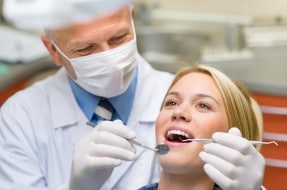Call now on0800 051 8069
Holistic Dentistry: What does it mean?
-
Simon Elliman considers the meaning of GDC guidance that dentists should take “a holistic and preventative approach to patient care.”
My dentist often chats to me while I am in the dentist’s chair, and keeps me up-to-date with the latest guidance that he has to follow. Recently I needed a replacement filling in a very heavily filled tooth, filled with old fashioned amalgam. He said that he was taking on board guidance to take a more “holistic” approach, and as a consequence, rather than recommending a crown, he recommended replacement of the filling with white composite material. Naturally he fully explained things to me and gave me all the options. The conversation gave me pause for thought in relation to the guidance which modern day dentists are receiving, and how this is changing practice.
New guidance
On 30 September 2013 new guidance issued by the General Dental Council came into force, entitled “Standards for the Dental Team.” It includes the following two injunctions which were, I think, informing my dentist’s approach:
“You must take a holistic and preventative approach to patient
care which is appropriate to the individual patient.”
“You must discuss treatment options with patients and
listen carefully to what they say. Give them the opportunity
to have a discussion and to ask questions.”
“Holistic and preventative”
The word “holistic” in the context of dentistry is perhaps a bit of a dirty one, carrying connotations of quackery, and an association with dentists insisting on the removal of all mercury fillings. However, the correct context is I think one in which there is a duty to preserve rather than destroy. For example, in order to create crowns, and even more so to create veneers, there is a necessity to largely destroy the tooth, reducing it to such a level that it could never again function as a tooth without its artificial protective covering. There is now therefore something of a presumption against such procedures, if a more conservative approach can equally be justified. Hence the advice my dentist was giving me.
“Preventative” is perhaps more straightforward and less controversial. Over the years many dentists have failed to advise their patients properly about effective oral hygiene (flossing, inter-dental brushes, mouthwashes and the like) and have failed to prevent the insidious onset of periodontal disease. The guidance which the GDC is providing emphasises the duty which dentists have to provide both proper advice and preventative treatment, perhaps primarily through their hygienists.
Informed consent
The second piece of guidance relates to the duty a dentist has, not only to explain treatment options to a patient, but also to listen carefully to the patient and answer their questions. Consent is not consent unless it is informed. In my case, my dentist gave me the options, and just as importantly, the cost of those options. The cost of a crown is considerably higher than that of a replacement filling, however extensive the filling. There is nothing new about an obligation to explain treatment to a patient, but the way in which the guidance is couched suggests a greater deference to patient autonomy, and a move away from paternalistic dentistry.
Summary
We have all read horror stories of dentists who “overtreat” patients, finding unnecessary work to carry out in order to line their own pockets. Probably gross overtreatment is relatively rare, but a subtler form of overtreatment has been pervasive. The call from the GDC for a “holistic and preventative approach”, if it is heeded, should go some way towards discouraging unnecessary, or unnecessarily expensive dental treatment.
If you or anyone you know has received unnecessary or excessive dental treatment, or has been failed by a dentist in preventing a condition such as periodontal disease, please get in touch with a member of the Dental Negligence Team.







